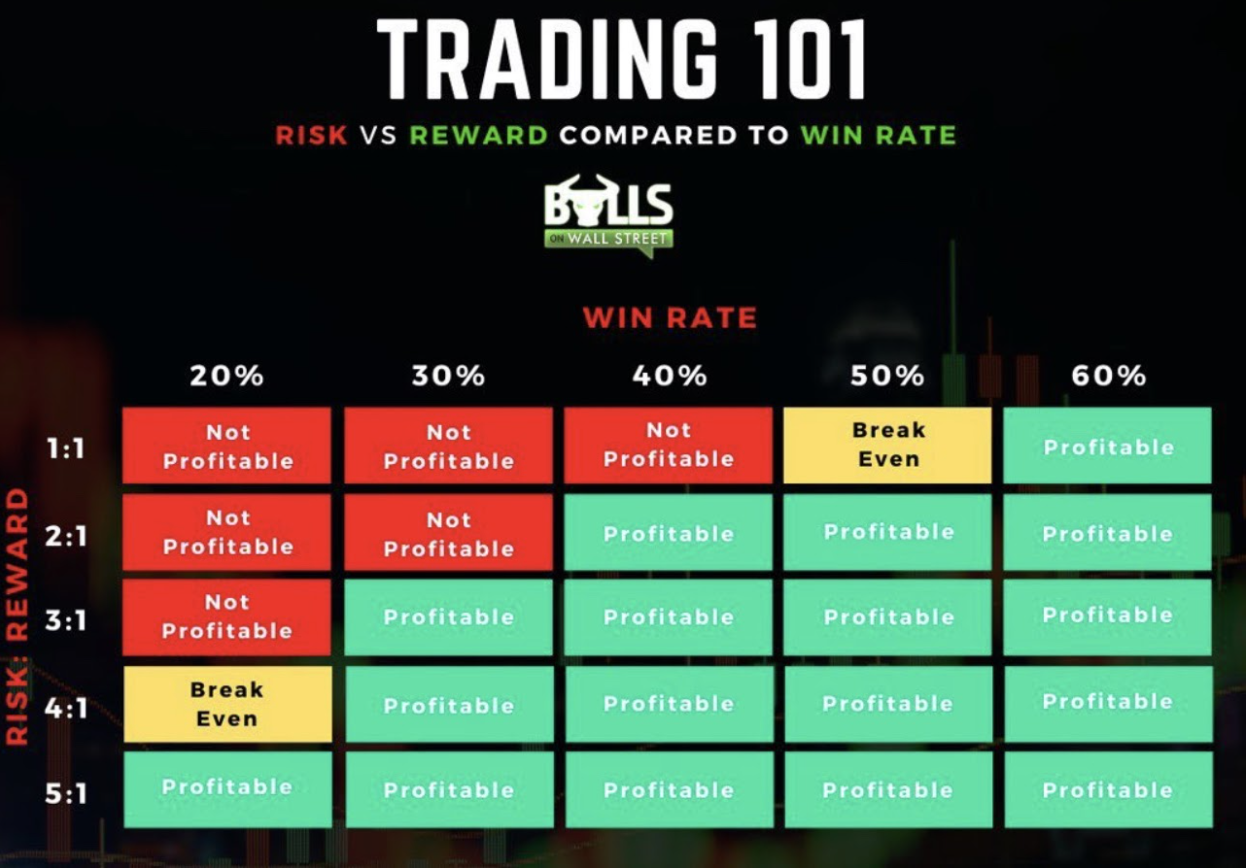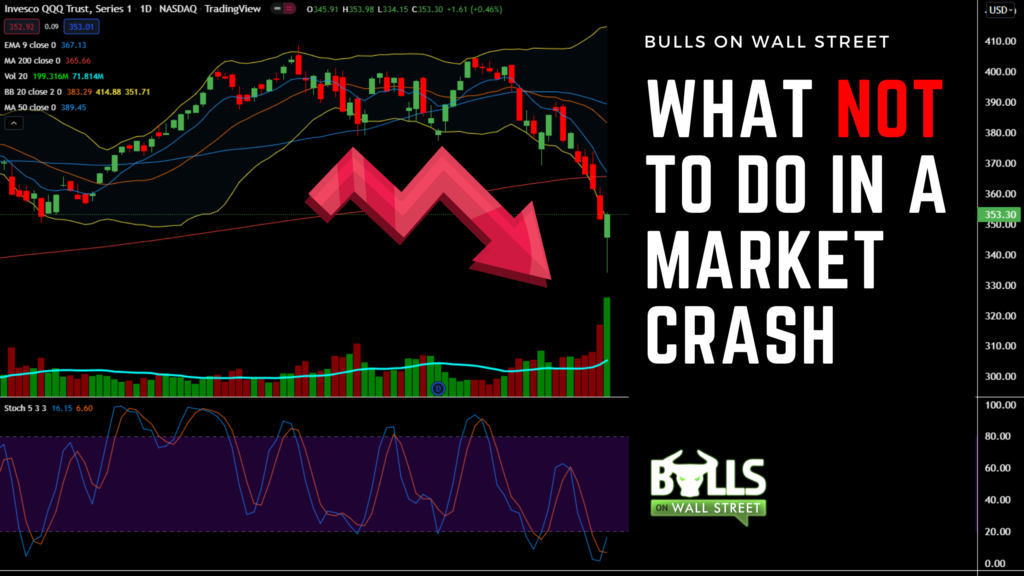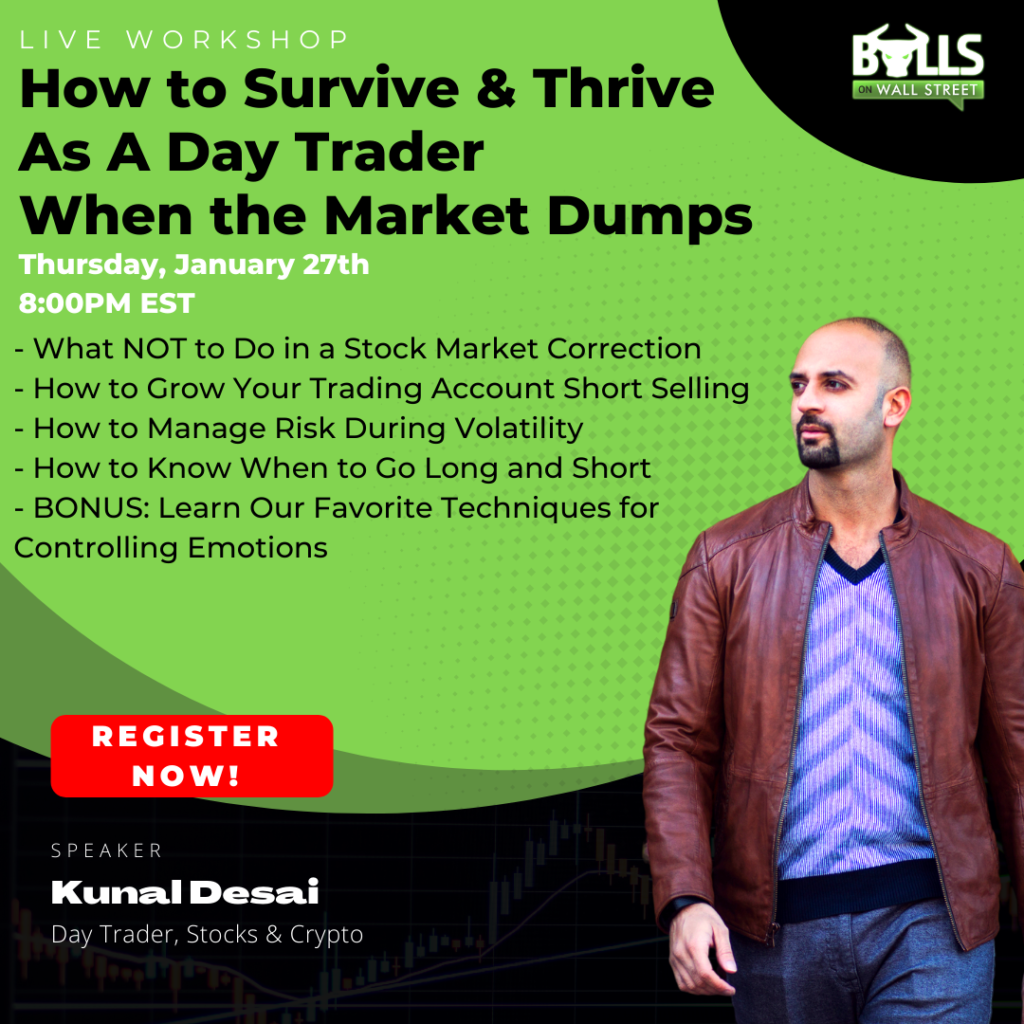Since the turn of the year, the US stock market has been getting annihilated. Major indexes are down as much as 15% already this year, with some individual stocks down as much as 50%.
This downturn has prompted some questions from our community surrounding the topics of how do I stay safe during a bear market or a market crash?
Yes, during a crash you can make a TON of money by taking advantage of the day-to-day volatility as well as getting yourself into some very nice long-term positions. But, you can also lose money even faster if you are not properly prepared.
That is why today we wanted to break down some of the top things you should NOT do whatsoever during a market crash:
Master Your Emotions
It is impossible to remove emotions from trading or investing. That is the reality of the game we play. But, in times of panic and downturn in the market, people’s emotions get heightened tenfold. When the market is crashing, you have to remain diligent and in control.
With a lot of red in the markets, especially if you are positioned heavily to the long side, you have to resist the instinct to panic, especially if you have long-term investment horizons or goals. Consider historical market statistics. Volatility is a natural part of the game, and crashes can happen. If you’re in the market for the long haul, bear markets are unavoidable. You have to accept periods of losses on your account and in the overall market. Downturns are temporary. Over every 15-year period, starting on any single day in its history, returns for the S&P 500 have been positive. Money moves in and out of the market, but economic growth ultimately spurs the value of companies higher year over year.
We will dive into more strategies on how to master emotions in this week’s live webinar:
Don’t Panic Sell
Just because the market is crashing or is down, you don’t want to panic sell at random levels. Yes, if a stock breaks a key level or support or hits your stop during a crash, sell by all means. But, if you are just selling out of pure fear and anxiety at a random point, that is not the right decision. Most of the time, you’ll be selling into support or the ‘bottom’, which brings upon pure frustration and painful losses.
Selling your positions in the middle of a crash can be the worst thing you can do. It’s the exact opposite of the buy-low and sell-high moto. Be calculated with your entries AND your exits always, especially during volatile times in the market. These reasons are why 95%+ of traders lose money in the markets. This video lesson dives into more detail how to be the 5% that thrive in these market conditions:
Don’t Randomly Average Down or Buy Stocks
Yes, following a market crash can bring some of the best long opportunities you can see in decades, but, you have to time them right. Market crashes can bring devastating moves to the downside, so you have to be careful of where you are buying stocks and what your plan is for each position.
Make sure that you look to buy at key levels of support where strong demand is coming in at. Look for large zones at key whole dollar levels with multiple bottoms on longer term time frames. Those will be levels that have the highest probability of attracting buyers at, giving you the best chance of entering a successful long position at.
Focus Even More On Your Risk-Reward
Always make sure to follow the risk-reward chart below, regardless if you are day trading, swing trading, or position trading stock within a bear market or a market crash. Be careful and pick your spots right when entering positions during times of volatility.
Focus on a 1:2 or BETTER risk-reward ratio on all trades and positions. It doesn’t matter if it is a scalp or a swing trade. When the volatility is through the roof in the market, you have to skew the odds in your favor even more than when the market is more ‘stable’. If your target isn’t 2x what you’re risking, walk away from that potential trade. There will be plenty of opportunities in this market environment, always avoid forcing set ups with poor risk vs reward:

Hard Stop Losses
The last thing we have to mention is hard stop losses. We’ve heard too many horror stories of new traders getting annihilated because they didn’t use a stop loss. Don’t believe gurus on the internet that tell you market makers will move a stock to take out your stops. No market maker cares about your tiny $10,000 position in Netflix. Mental stop losses can go south quick if you’re not an experienced or disciplined trader. Put on a hard stop loss right after you enter a position.




